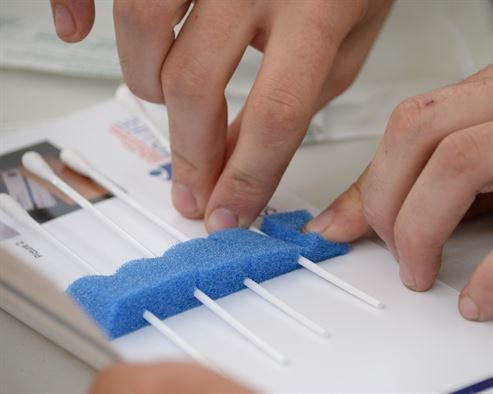The dangers of mail-in genetic testing
By Daniel Munro,
Maclean's
| 06. 05. 2017
The risks from home-based genetic testing kits to privacy as well as people’s health appear far greater than the supposed benefits.
If you could have an early warning about your genetic risk of acquiring a serious disease or health condition, would you want it? For a few hundred dollars and a saliva sample, private companies will analyze parts of your genome and send you a report that quantifies your predisposition for conditions like Huntington’s disease and late-onset Alzheimer’s disease, and your carrier status for inherited conditions such as cystic fibrosis, Tay-Sach’s disease and sickle cell anemia. Armed with that information you could make lifestyle changes to lower risk, seek medical advice and treatment, and talk with friends and family about your plans for managing possible symptoms and outcomes.
But before we swab our cheeks and mail saliva samples to private labs, we should try to answer a few questions. Are we equipped to make sense of the test results? Could our misunderstanding produce more harm than good—for both individuals and society? How much should we worry about how DNA samples...
Related Articles
By Pam Belluck and Carl Zimmer, The New York Times | 11.19.2025
Gene-editing therapies offer great hope for treating rare diseases, but they face big hurdles: the tremendous time and resources involved in devising a treatment that might only apply to a small number of patients.
A study published on Wednesday...
By Emily Glazer, Katherine Long, Amy Dockser Marcus, The Wall Street Journal | 11.08.2025
For months, a small company in San Francisco has been pursuing a secretive project: the birth of a genetically engineered baby.
Backed by OpenAI chief executive Sam Altman and his husband, along with Coinbase co-founder and CEO Brian Armstrong, the startup—called...
By Jessica Hamzelou, MIT Technology Review | 11.07.2025
This week, we heard that Tom Brady had his dog cloned. The former quarterback revealed that his Junie is actually a clone of Lua, a pit bull mix that died in 2023.
Brady’s announcement follows those of celebrities like Paris...
By Emily Mullin, Wired | 10.30.2025
In 2018, Chinese scientist He Jiankui shocked the world when he revealed that he had created the first gene-edited babies. Using Crispr, he tweaked the genes of three human embryos in an attempt to make them immune to HIV and...




